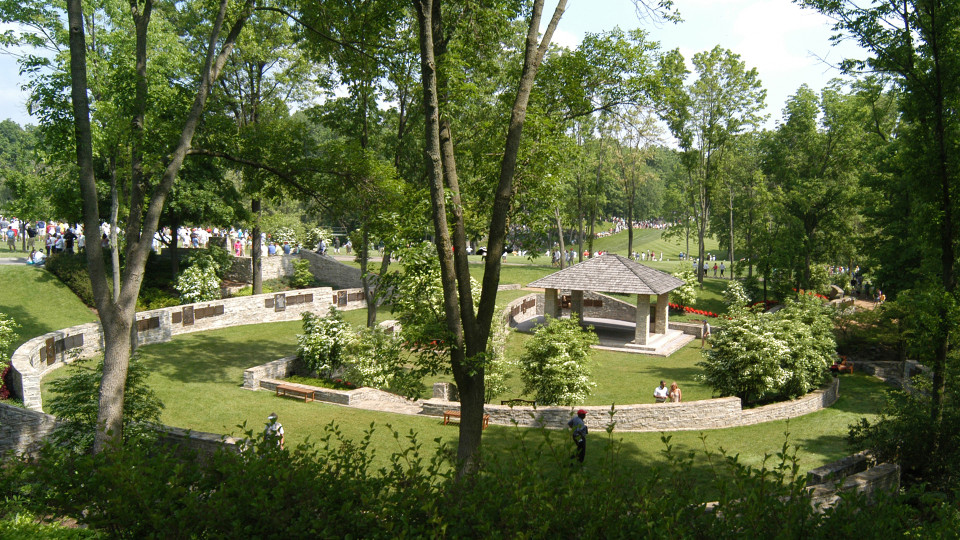Honorees


Image Credit: http://www.todaysgolfer.co.uk
Tony Jacklin, Ralph Guldahl, Charles Blair MacDonald, Craig Wood
TONY JACKLIN
With an aggressive style of play and a well-rounded game, Tony Jacklin rose from an English working-class family to make a permanent mark on the game of golf. Jacklin’s memorable career was highlighted by 24 victories worldwide, two major championships, and a Ryder Cup legacy as both a player and captain.
In 1969, Jacklin brought a fresh new face to the British Open at Royal Lytham, besting Bob Charles by two shots for the victory and making Jacklin the first Englishman to win the British Open since 1951. Later that year, in the Ryder Cup matches at Royal Birkdale in Southport, England, Jacklin and U.S. team star Jack Nicklaus walked on to the 18th green in the final singles match of the competition with their match all square and the teams tied. In a spontaneous gesture following his par putt, Nicklaus reached down, grabbed his playing partner’s ball marker, and conceded a 2-foot putt to Jacklin that resulted in a tie between United States and the Great Britain and Ireland teams—the first tie in Ryder Cup history. Although the United States retained the Cup, the moment has been referred by some sports writers “as the greatest single sporting gesture ever.”
This moment inspired the creation of The Concession Golf Club near Sarasota, FL, which features a Jack Nicklaus Signature Golf Course designed in association with Jacklin. The course was voted the 2006 Best New Private Course in America by Golf Digest.
Jacklin’s success in the British Open was followed in 1970 with his second major championship. Jacklin became the first U.K. golfer in 50 years to win the U.S. Open. His major championship victories sparked a surge of golf in Britain.
Jacklin went on to play in seven Ryder Cups, but arguably his most important contributions to the future of the matches came as captain. In 1985 at The Belfry in Sutton Coldfield, England, Jacklin led the Europeans to their first win in 28 years, and the 16½-11½ margin of victory remained Europe’s largest until its 9-point triumphs in 2004 and ‘06. Two years later at Muirfield Village Golf Club, Jacklin again led his team to victory, this time over a U.S. team led by Nicklaus, for the European’s first win on U.S. soil.
With two major championship victories, three PGA Tour wins, and 22 career wins on the European Tour, Jacklin was inducted to the World Golf Hall of Fame in 2002 and continues to make his mark on the game as a golf course designer, competitor, and global ambassador.
2008 POSTHUMOUS HONOREES
RALPH GULDAHL (1911–1987)
Emerging with a spectacular stretch of success in the mid-to late 1930s, Ralph Guldahl’s time in professional golf, albeit brief, was memorable with U.S. Open wins in 1937 and ‘38, followed by a Masters victory in ‘39. During that win, he gave what could be considered the most riveting performance of his career. Scoring a then-record 33 on the back nine at Augusta National Golf Club, a mark later broken by golf legend Ben Hogan, Guldahl went on to edge Sam Snead for the green jacket. His victory was highlighted by a dazzling eagle on the par-5 13th hole. With three straight Western Open wins, Guldahl was the only golfer to win both the Western Open and the U.S. Open in consecutive years. He left the Tour in 1942, returning briefly in 1949, before retiring with 16 PGA Tour wins and 20 second-place finishes.
CHARLES BLAIR MACDONALD (1856-1939)
After learning the game of golf in the birthplace of the sport, C.B. MacDonald, a Canadian-born golfer, held the spirit of Scotland in his heart as a player and a golf course designer. MacDonald has the distinction of being the inaugural U.S. Amateur Champion in 1895 after playing a part in the creation of the U.S. Golf Association in 1894 as the founding vice president. He is known as much for those events as he is for his contributions as the “Father of Golf Course Architecture.” MacDonald’s design résumé boasts such notable courses as the Mid-Ocean Club in Bermuda and National Golf Links of America in Southampton, N.Y., which was inspired by Scotland’s links-style designs.
CRAIG WOOD (1901-1968)
A 21-time winner on the PGA Tour, Craig Wood’s career highlight came in 1941 when he became the first wire-to-wire Masters Champion, shooting 66-71-71-71—280 for a three-shot victory over legend Byron Nelson. Only three other men have equaled the feat at Augusta National—Arnold Palmer (1960), Jack Nicklaus (1972) and Raymond Floyd (1976). Wood followed his Masters success by winning the 45th U.S. Open at The Colonial Country Club in Ft. Worth, TX. His score of 284 beat former nemesis Denny Shute by three strokes. It was the first time someone had successfully captured the first two major championships of the year. Wood was also a member of three Ryder Cup teams (1931, ’33, ’35).
Presenting Sponsor

Official Tournament Partners





